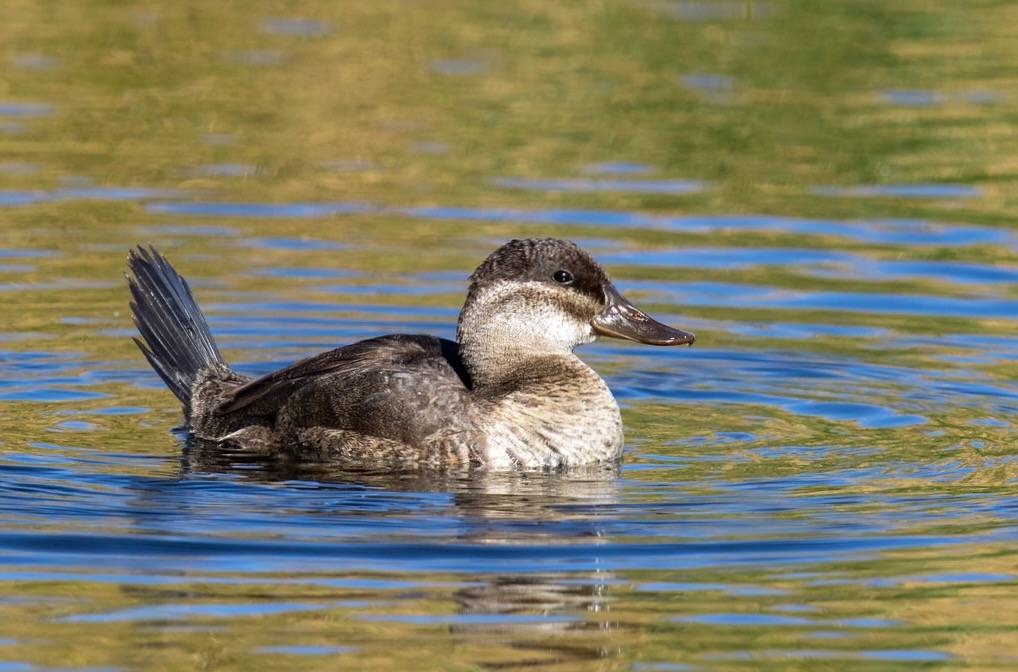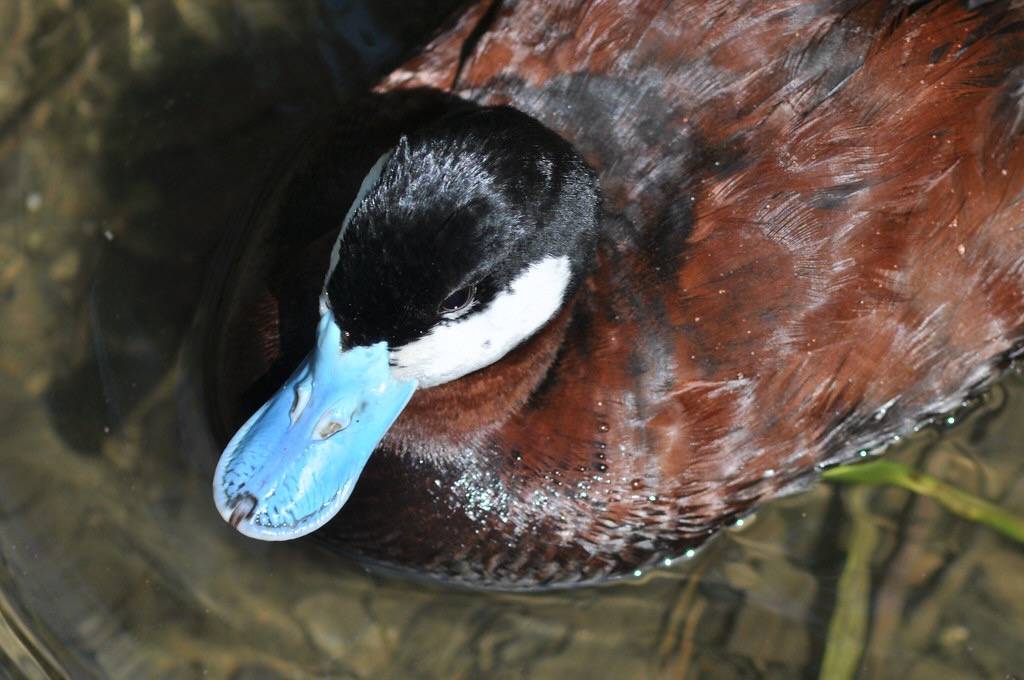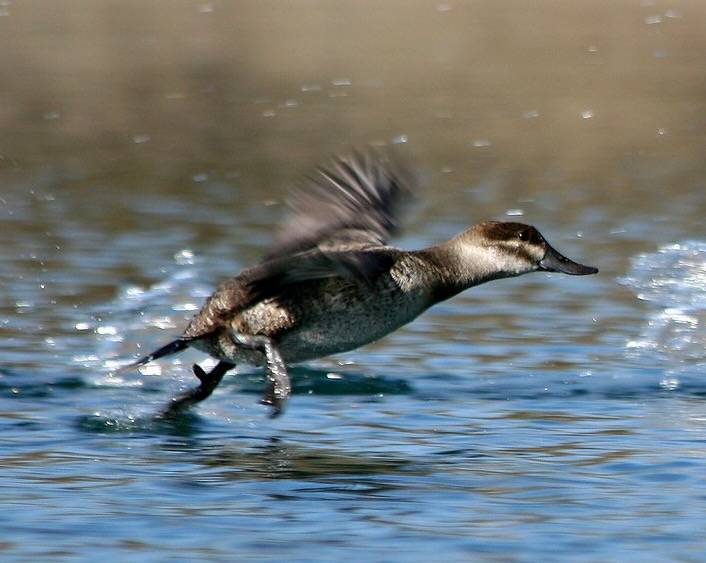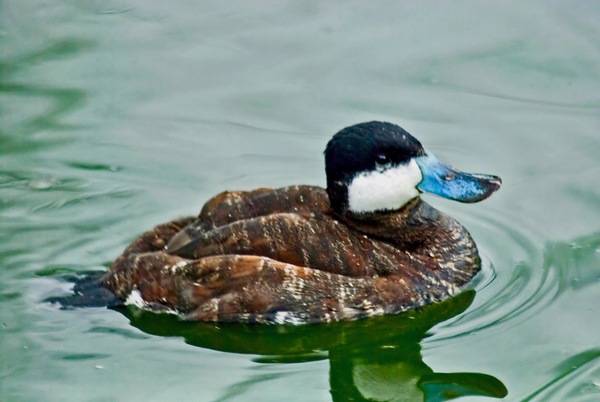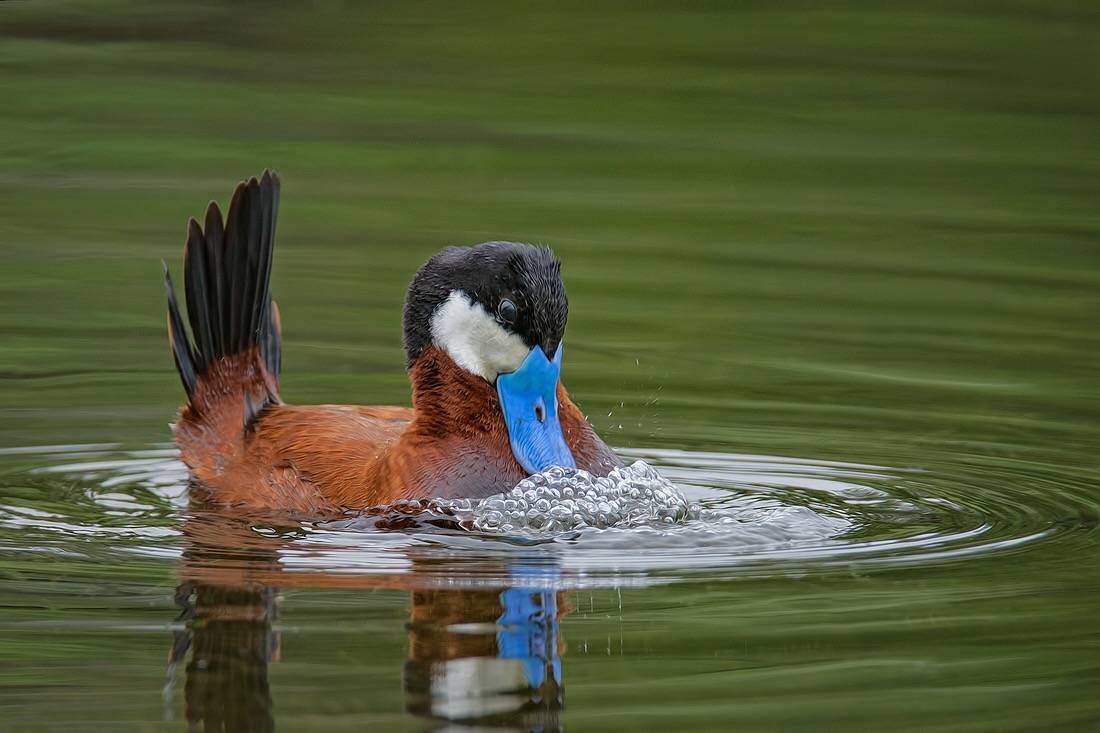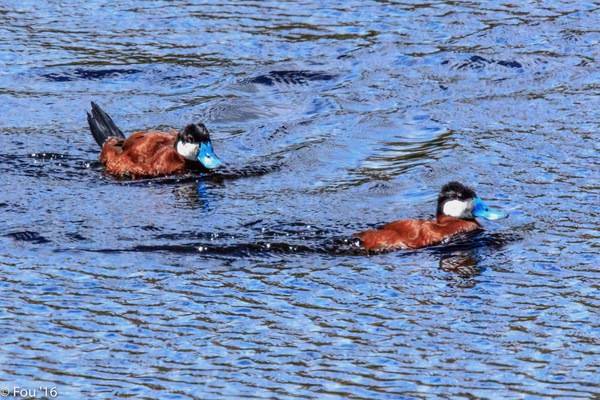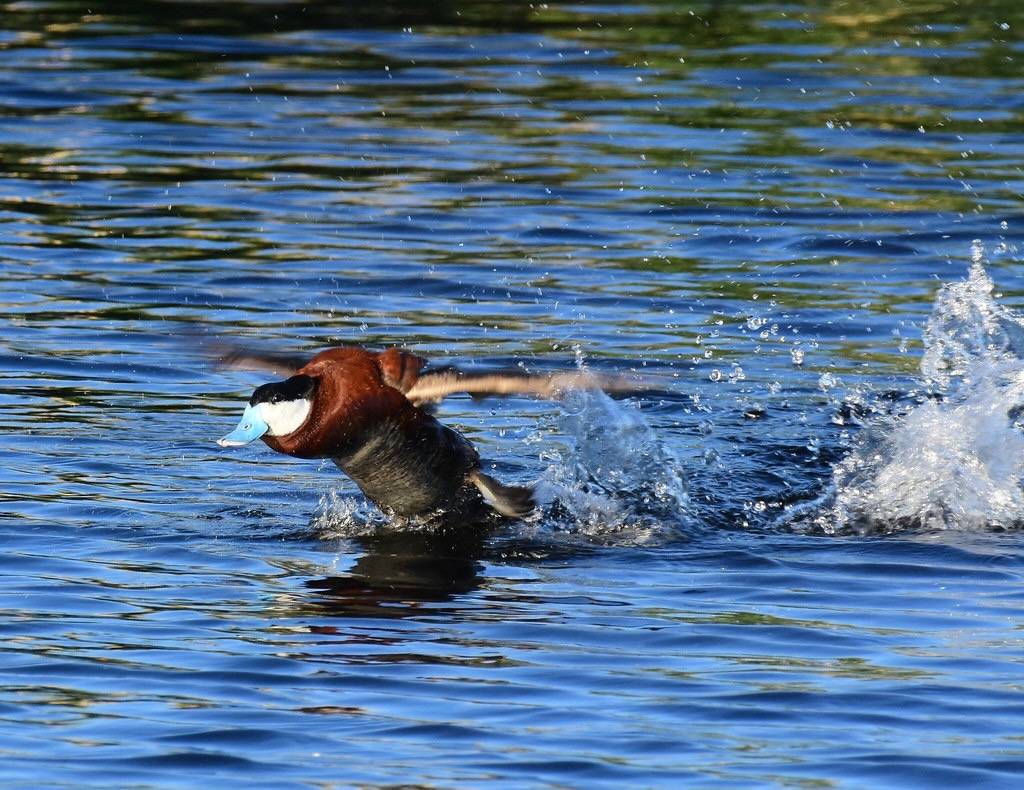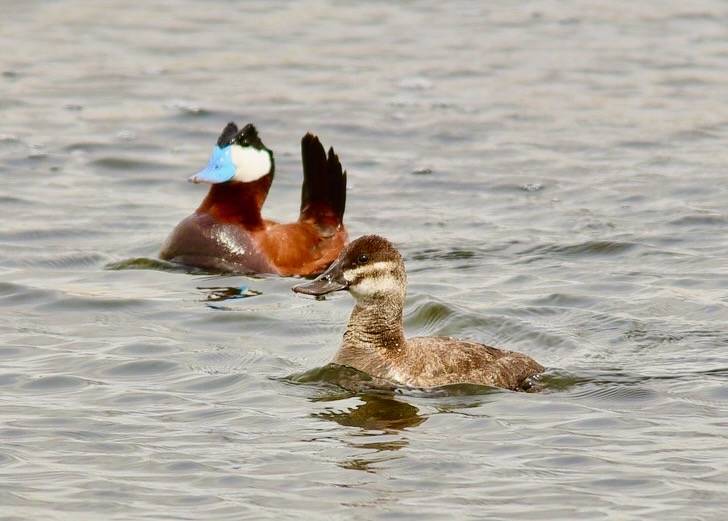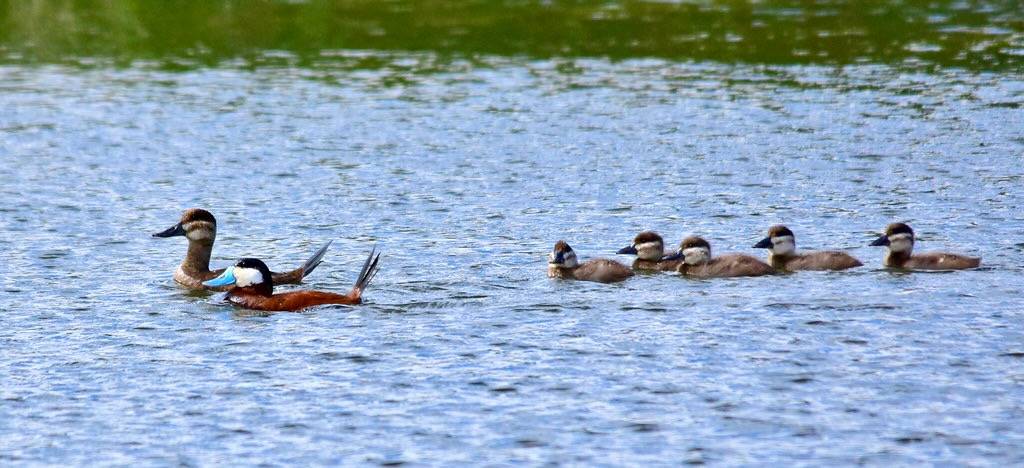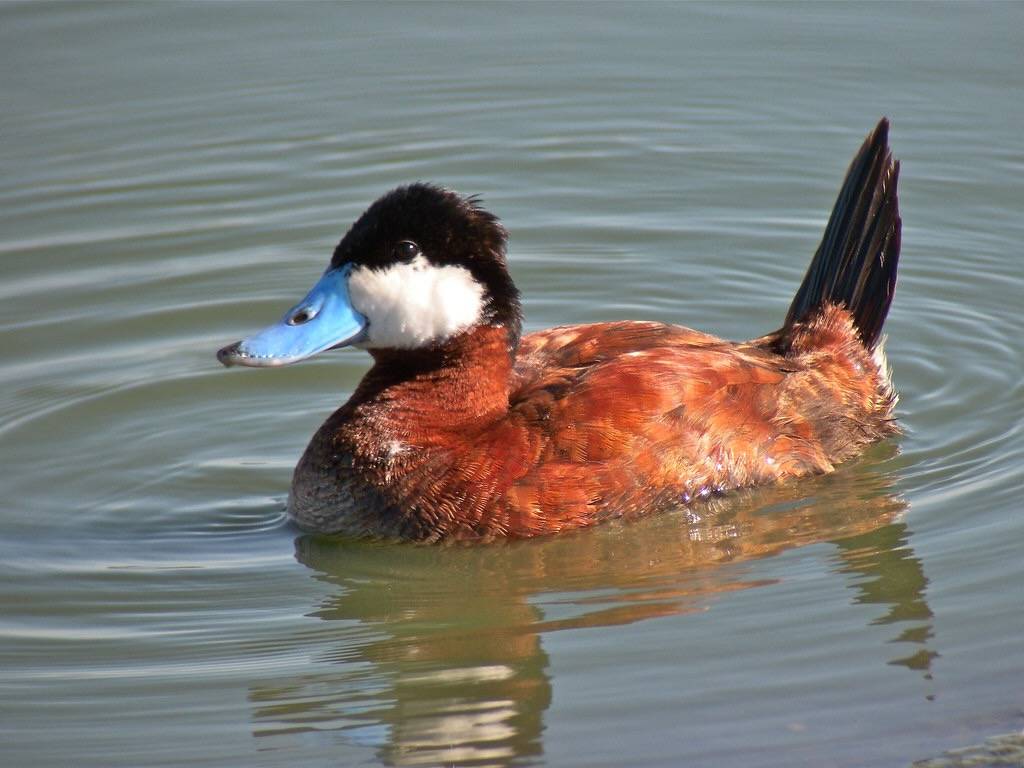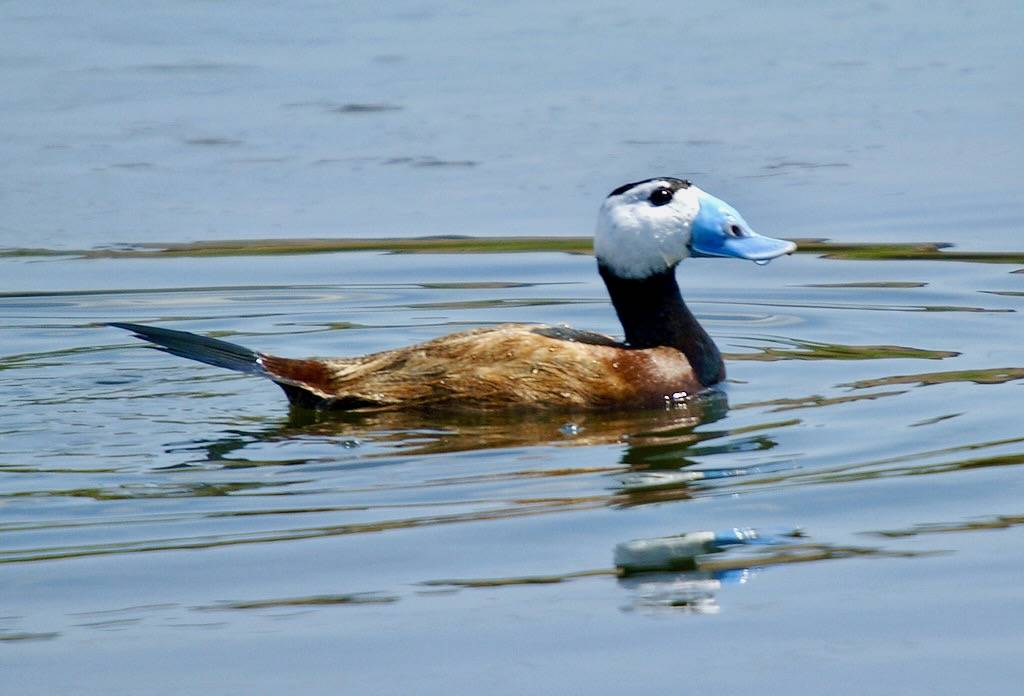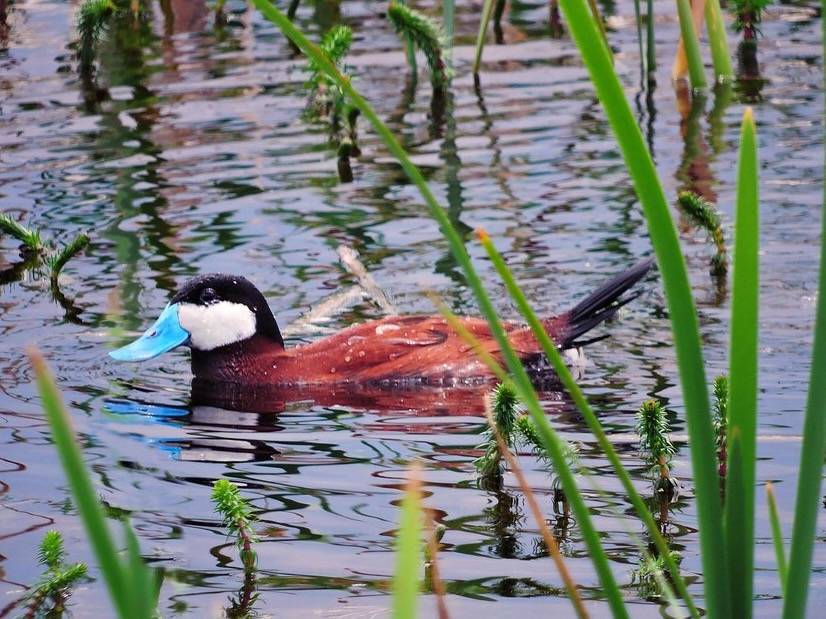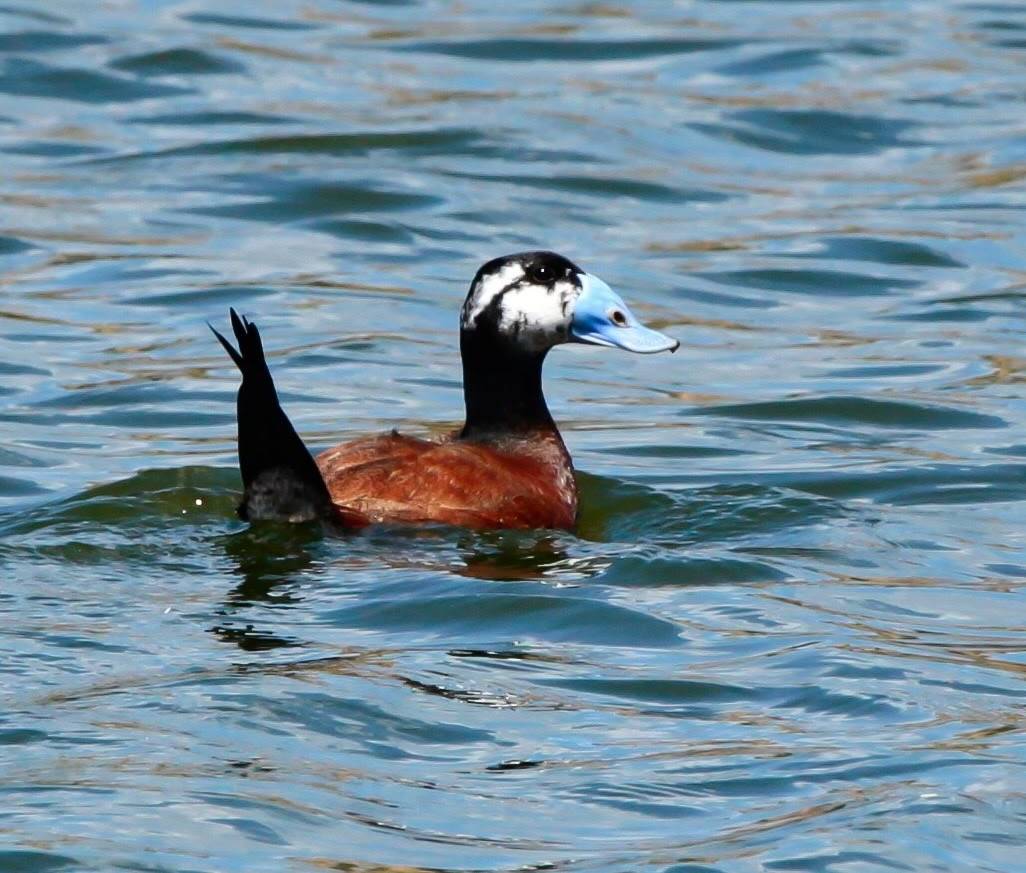Ruddy Duck
Based on available records for Salter Grove from 2002 through 2023, the Ruddy Duck was sighted in North Cove in late January 2013 and then again in late March 2020. Both the causeway and the northern arm of the breakwater would provide potential vantage points for this migrant.
It breeds in lakes and ponds with dense marshy vegetation in the prairie pothole region of North America. This is an extensive area that stretches from southwestern Canada to north central United States. The Ruddy Duck winters along the Atlantic and Pacific coasts of the southern states, as well as in lakes and ponds that do not freeze. Some may venture as far as Guatemala and El Salvador.
Its outsized webbed feet are set far back on its body which means the Ruddy Duck could barely walk on land. However, this arrangement is great for diving to reach Invertebrates that thrive in the muddy bottoms. Plant parts such as shoots, tubers and seeds are eaten as well and become more important outside the breeding season.
Unlike most other ducks, the Ruddy Duck only forms pairs after arrival to the breeding ground. The male spends a great deal of energy in courting a mate. It inflates an air sac in its neck like a balloon and thumps it repeatedly with the outsized, bright blue bill. This continuous motion pushes air from the breast feathers and generates a ring of small bubbles in the water. All the while, the stiff black tail tilts steadily forward until it almost touches the back of the head.
Although not exceptional in appearance, the Ruddy Duck female astounds in the resources put into egg production. Each egg is disproportionately large (2.5 oz) relative to her small body (20 oz), and a large clutch of eggs (8 or more) easily approaches or exceeds her body weight. Remarkably, some females may even produce two clutches in one season.
The precocial ducklings are well developed after hatching from the large eggs and quickly swim and feed independently. The female is solely responsible for protecting the young from predators because the male usually leaves as soon as she starts incubating the eggs. In turn, the female typically abandons the ducklings before they can fly.
Ruddy Ducks were introduced to the United Kingdom in the mid 1940's to add interest to wildfowl collections. Escaped birds proliferated and spread to other European countries. Spanish conservationists were alarmed because it appeared to hybridize readily with the White-headed Duck, a native species that only numbered about 10,000 and was considered globally threatened. Expensive culling measures ($1,200 to $1,500 per bird) started in the early 2000's and by 2014, there remained only 20-100 individuals in Europe, from a peak of about 4,400.
For more information:
https://www.allaboutbirds.org/guide/Ruddy_Duck
https://www.audubon.org/field-guide/bird/ruddy-duck
https://en.wikipedia.org/wiki/Ruddy_duck
https://www.waterfowl.org.uk/wildfowl/stifftails-allies/ruddy-duck/
https://www.waterfowl.org.uk/wildfowl/stifftails-allies/white-headed-duck/
https://animaldiversity.org/accounts/Oxyura_jamaicensis/
https://digitalcommons.unl.edu/cgi/viewcontent.cgi?article=1020&context=biosciornithology Johnsgard, P.A. (1995) Daffy but dapper: a serious approach to the comical-looking Ruddy Duck.] Papers in Ornithology. 21 [from Birder’s World April 1995: pp. 48-51



